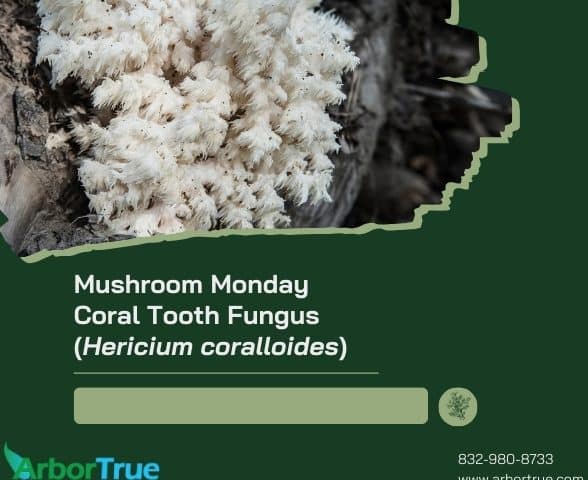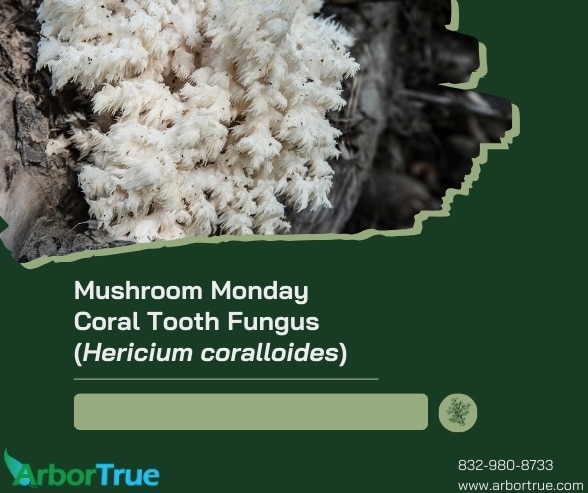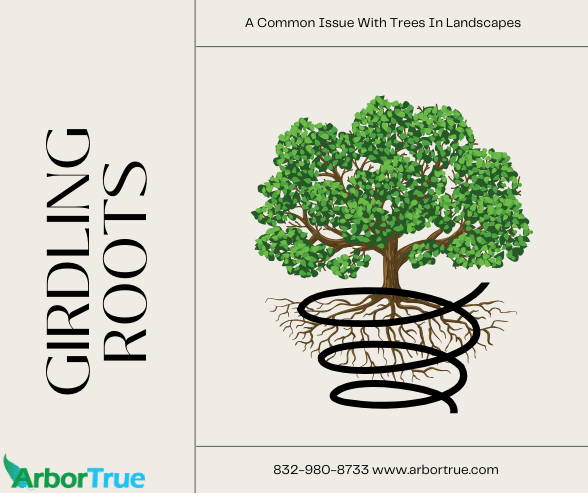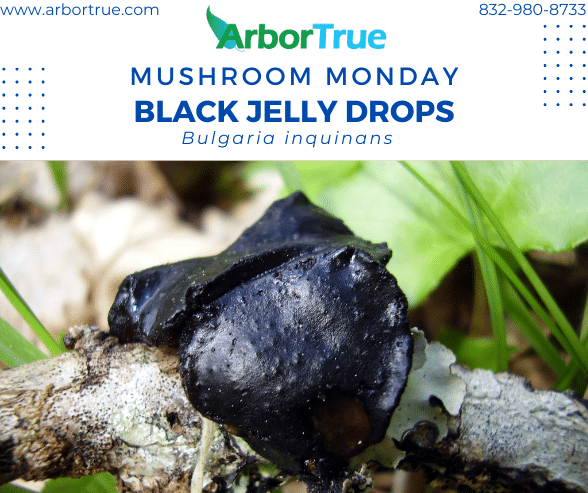
Ashe Juniper (Juniperus ashei)
March 22, 2024
Compost or Black Gold?
March 27, 2024
Mushroom Monday: Coral Tooth Fungus (Hericium coralloides)
Today’s Mushroom Monday mushroom is the Coral Tooth Fungus (Hericium coralloides). This mushroom is a little different than some we’ve featured before. Read on to learn more about it.
What Does Coral Tooth Fungus Look Like?
Coral tooth fungus has a different appearance from some mushrooms you might be used to that have stems and caps. Instead, it has a structure of branches and spines.
The mushroom has a short stalk that is attached to the wood it is growing from. From this, branches come out and the branches are covered in small spines.
The whole mushroom can vary in size from around three to around sixteen inches across and around two to eight inches high. The branches are around 0.2 to around 0.4 inches in diameter and the spines around 0.2 to 0.4 inches in length. The spines are fleshly and small, with widths of around 0.04 inch.
Coral tooth fungus mushrooms generally start out white in color and can turn slightly yellow to brown as they age.
The mushroom resembles a coral and the spines can look like the teeth on a comb.
What Type of Mushroom is Coral Tooth Fungus?
Although there are a lot of ways to classify mushrooms, one way is by their relationships with trees and other plants. Coral tooth fungi are saprophytes. They get energy and nutrients from dead and decaying organic matter. They generally can be found growing on dead hardwood. In some cases, they can also be parasites, where they are growing on living wood. They can be found alone or in groups and grow in various places around the world.
Where are The Gills?
Coral tooth fungi don’t have gills like some other mushrooms we’ve featured before. Instead, their spores are produced on their spines.
If you liked learning about the Coral Tooth Fungus, you can check out other mushrooms in our Mushroom Monday category. Follow us on Facebook to keep up with our posts and to learn more from ArborTrue.




